On behalf of the Scientific Committee (SC) of the Master’s Degree in Graphic Design and Editorial Projects (MDGPE), I would like to welcome you — by first thanking and congratulating all of you — for your integration into the community of the Faculty of Fine Arts of the University of Porto (FBAUP).
Results of the Admissions
You are among the 36 who stood out among the 100 candidates in the 2024 three admission phases.
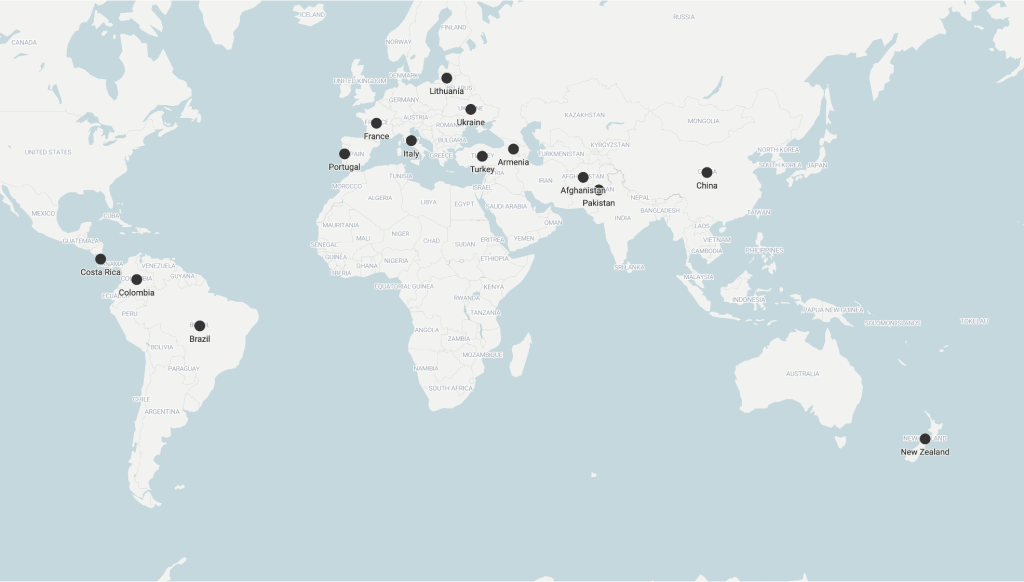
The origins of the 32 students enrolled in the MDGPE in 2024 are — as has been tradition — varied. Mostly female (85%), a trend that is becoming normal, and 75% national (27), with 25% of Brazilian origin (6) and 5% of other nationalities (eg. Colombia, Italy, and Turkey) who applied.
We usually have more homogeneous master’s classes, from partner schools such as ESAD in Matosinhos and DeCA at the University of Aveiro.
However, it is with great joy and interest that we once again have a truly heterogeneous group of students from international universities such as Centro Universitário de Brasília, Izmir University, Los Libertadores Fundación Universitaria, Nuova Accademia di Belle Arti, Centro Universitário de Maringá, Universidade Federal da Bahia, Universidade Presbiteriana Mackenzie among others.
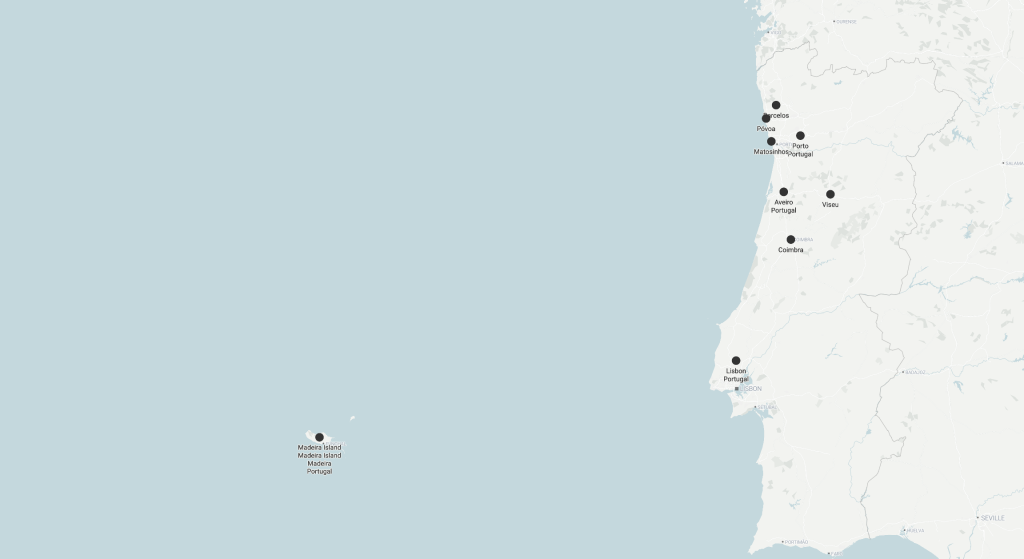
But what surprises and interests us the most is the varied origin of Design, Graphic and Communication schools such as ESAD in Matosinhos and ESAD.CR of Caldas, the University of Aveiro, the University of Madeira, FBAUL, a sister school of the University of Lisbon, ESAP, IPCA in Barcelos, ESMAD in Póvoa and a special note for the vote of confidence of our LDC students from FBAUP, and the students of Visual Arts.
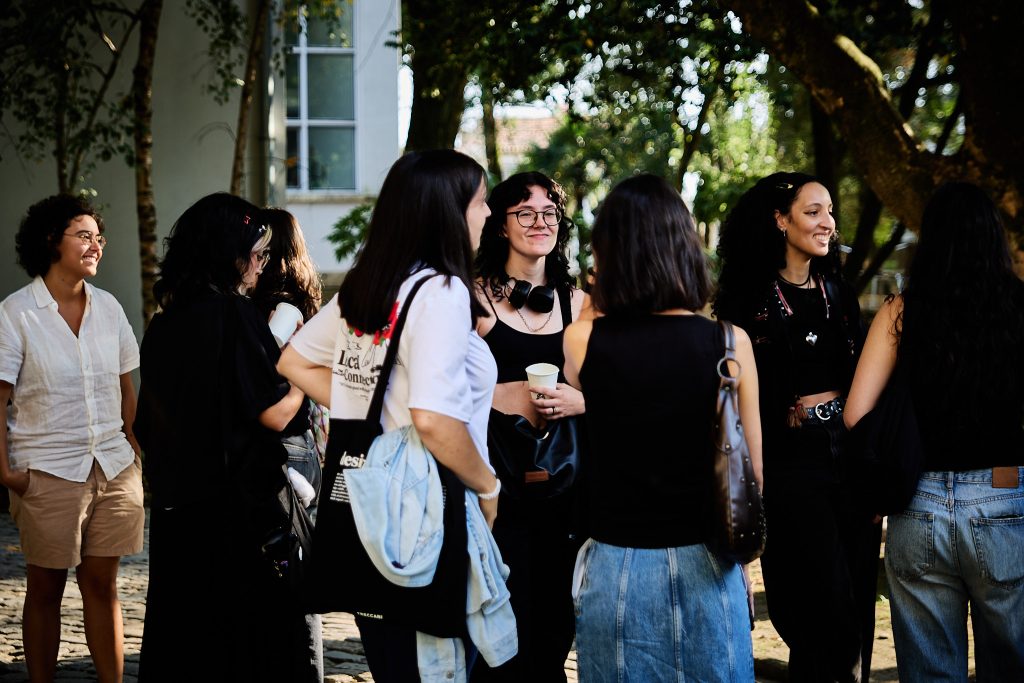
We are seeing a rise in the applications of Multimedia and Audiovisual students from Schools and Colleges such as the Escola Superior de Comunicação Social, FCTUC, FLUP, and Politécnico de Viseu.
On the one hand, this seems to reveal the diversified and currently fragmented Design education ecosystem in Portugal.
On the other hand, this reveals that we are in a very interesting position to have a range of skills, interests, and knowledge sharing that is varied and very comprehensive within the 2024-25 group of students. We sincerely hope that this diverse and skill-rich group will benefit from the collaboration and support of one another. We will be here to try to level out any asymmetries of skills in your basic training (Typography, Editorial, Branding, Illustration, etc.). But we want you to return this investment by sharing and promoting your specific skills in art, audiovisual, and computing with the rest of the group of students, thus leveraging everyone’s learning experience.
The 2024-25 academic path ahead of you
You are now beginning a new stage in your personal and academic life. We hope that you enjoy all the aspects that academic life in Porto has to offer.
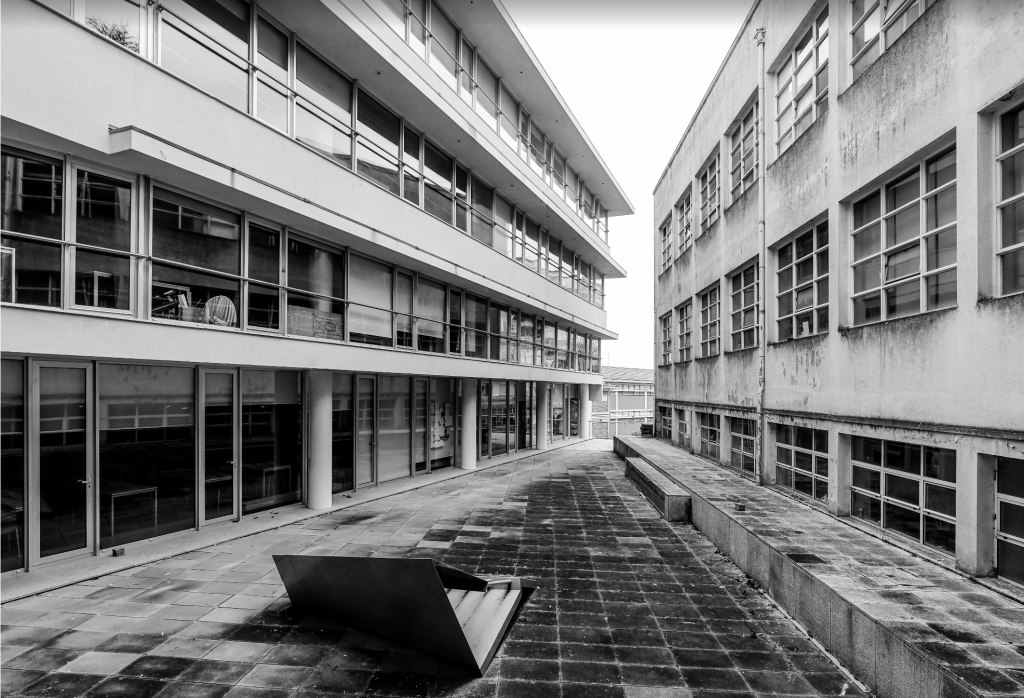
As you saw on Monday in the speech by the director and department directors, FBAUP is made up of approximately 2,000 students, with the design department offering 5 degree-granting courses and continuing to expand its offerings to areas such as Industrial and Product Design, Illustration, and, very soon, Interaction Design and Computational Media. The MDGPE and the rest of the academic ecosystem operate and take advantage of the facilities we have just had the opportunity to visit. But it doesn’t stop there — there are also Boa Nova and Coronel Pacheco (UPTEC Baixa and PINC), and the Asprela campus (UPTEC) where regular activities are held, especially in postgraduate courses and, who knows, the future of some of you, the PhD in Design.

The Master’s Degree in Graphic Design and Editorial Projects (MDGPE) is a postgraduate program at the Faculty of Fine Arts of the University of Porto. It focuses on the research, development, and design of communication and editorial artifacts.
A program specialized in specific areas of Communication Design, such as Graphic Design in its institutional identity and communication aspect, Art Direction, Advanced Typography of and for books, Infographics and Data Visualization, Type Design, and production of digital Typographic Fonts and Illustrations.
These are the main areas, but we are not limited to these only, in which we expect you to apply the acquired skills in a final printed or digital research and development project. Of an analog or digital nature.
This is perhaps one of the first and main challenges that we face. The nature of the Graphic Design activity has been changing in recent decades. On the one hand, in recent years, large agencies have been decreasing in number and size, giving way to small collectives and individual studios that, thanks to computational power and the relocation of work — digital nomads and offshore production — have increased their production capacity. But this also increases the pressure on national activity. Portugal has become attractive to workers competing in an increasingly competitive activity.
However, I would like to raise awareness of the current opportunities and challenges for designers. We are already tired of hearing that AI is revolutionizing processes. We would like to see how you incorporate AI services and agents into your creative processes to enhance — accelerating, increasing complexity, and expanding your range of production skills for example. And in turn how this merging of human creativity and Artificial Ingenuity will shape the aesthetics of communication in the coming years. But it must be used ethically and transparently, dealing with the issue of authorship, appropriation, and plagiarism in all its aspects. Being from your critical reasoning from the tools’ output, or your own realization.
But remember that our society continues to face serious political and social problems. Last year, we mentioned Russia’s war on Ukrainian territory. This year we have seen not the end of it, but the appearance of a few more global conflicts — the war in Israel, the imminent conflict in Iran, the growing territorial and economic tension between China and the territories it intends to unify.
These global events force us to question our values and actions.
Unfortunately, there seems to be a growing tendency for nations and cultures to have difficulty respecting and recognizing others — in terms of gender, culture, and, most seriously, religion — which forces us, voluntarily or involuntarily, to question the role and how designers should act and communicate. After all, this is a Master’s program designing identity and media experiences and artifacts.
We should be addressing these issues in the most urgent matter. Whether about the East or the global South.
Slow down. Think before acting. Or the need for more friction
This recent (or maybe not so recent) rise of chaotic entropy between different cultures’ communication is largely due to the way we use digital communication and social networks to immediately or thoughtlessly amplify less constructive or less positive discourses and behaviors. Something that should benefit from the inclusion of a little more technological and communicational friction within the design of the tools. But also in the way we read, interpret, and disseminate ideas. Friction — meaning the introduction of some sort of “critical force to push back against the immediate drive or action” — may help to slow us down. Face others. Face other ideas. And contemplate the possibilities. This may be artificially introduced by the different [digital] tools and media platforms we use to consume media. And/or it can also be designed in the communication artifacts themselves.

Global and Local issues
Climate and climate change remain on the agenda. As do migrations and the social sustainability that this entails. The aging population and health and well-being continue to be a concern for all of us, to which we must pay special attention. How we respect and care for the elderly and the vulnerable says a lot about our culture and is a growing opportunity.
Cultural Legacies
Also on this point, the challenge of preserving and promoting cultural legacies is on the list of European priorities and is a subject that you should pay special attention to in your academic and professional career. It is our duty and your role as designers and future teachers to have a hand in increasingly strategic reflection and action.
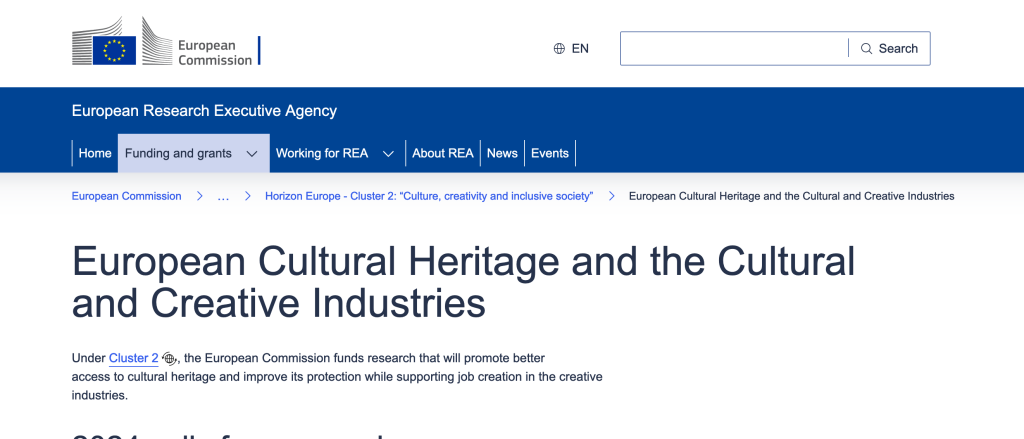
The structure of the course and teachers
The MDGPE has a standard structure, but its own, which you should familiarize yourself with from now on. Take a look at the syllabus and the portfolio for an insight into what is to come.
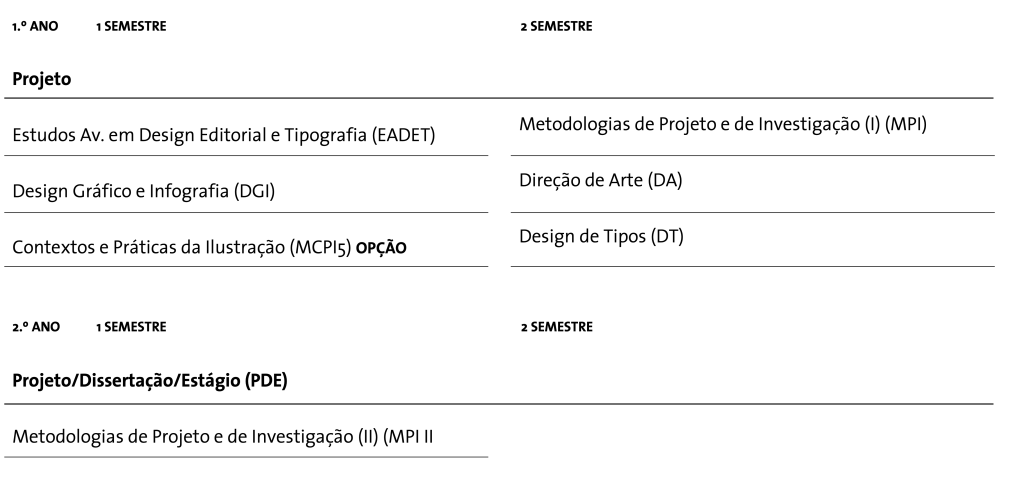

Make sure you get to know your MDGPE teachers, but most importantly all of the FBAUP teaching and technical staff. You will soon be developing your research project that may well be integrated within one of the FBAUP’s research unit’s ongoing research and development projects.
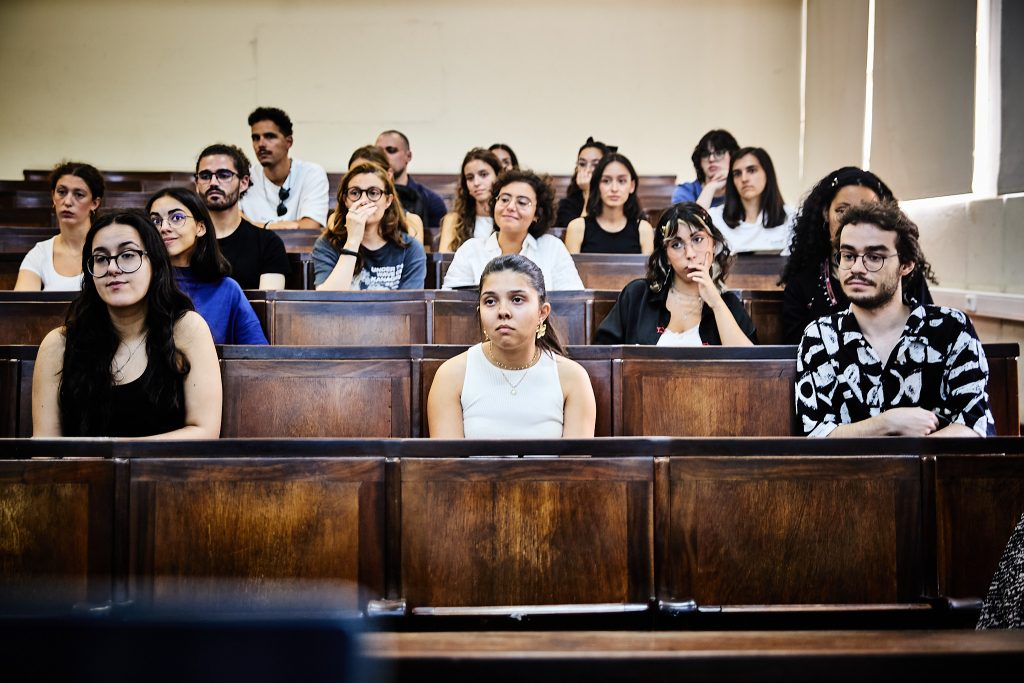
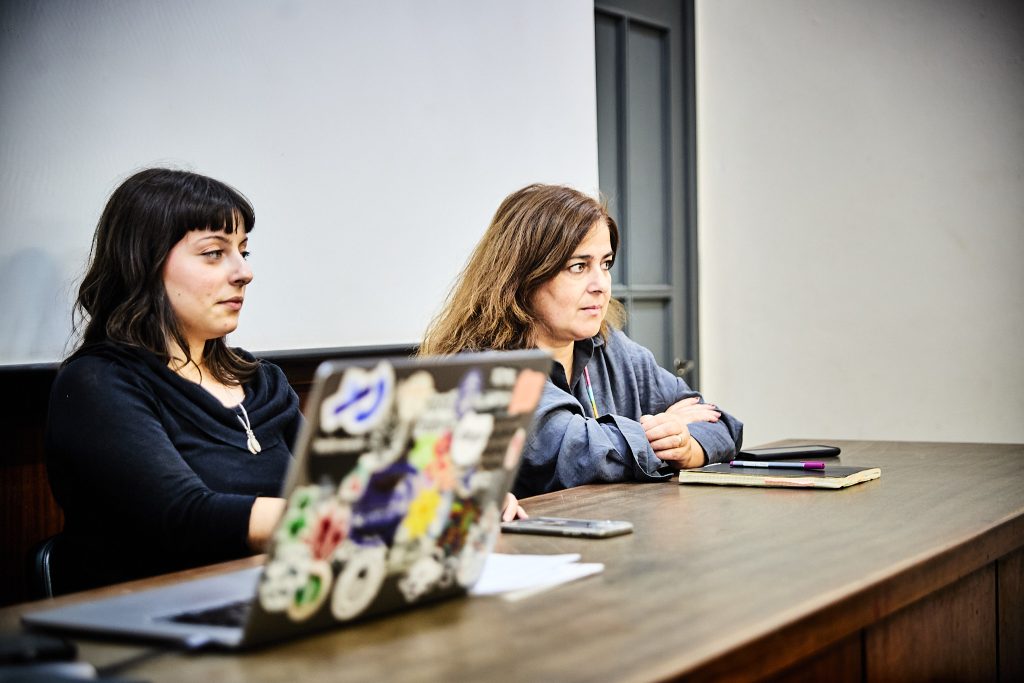
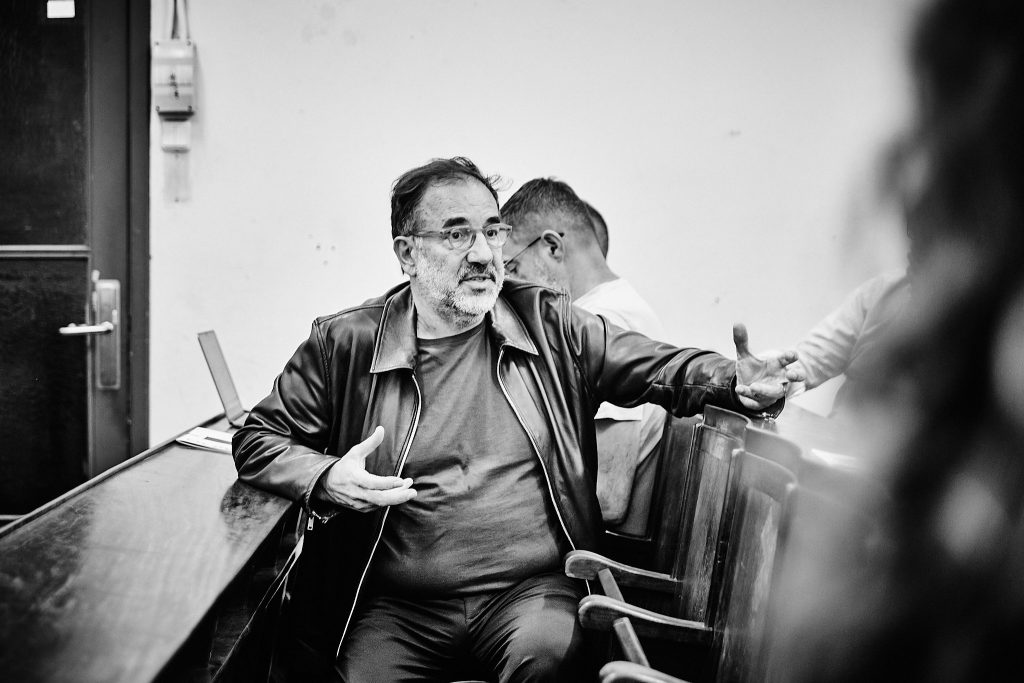
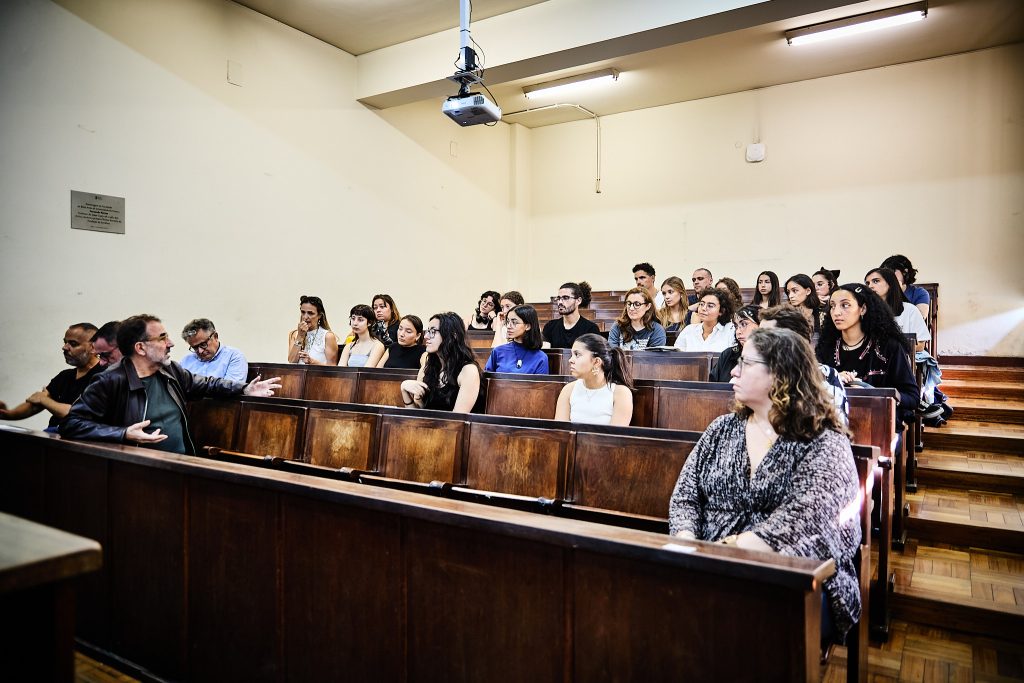


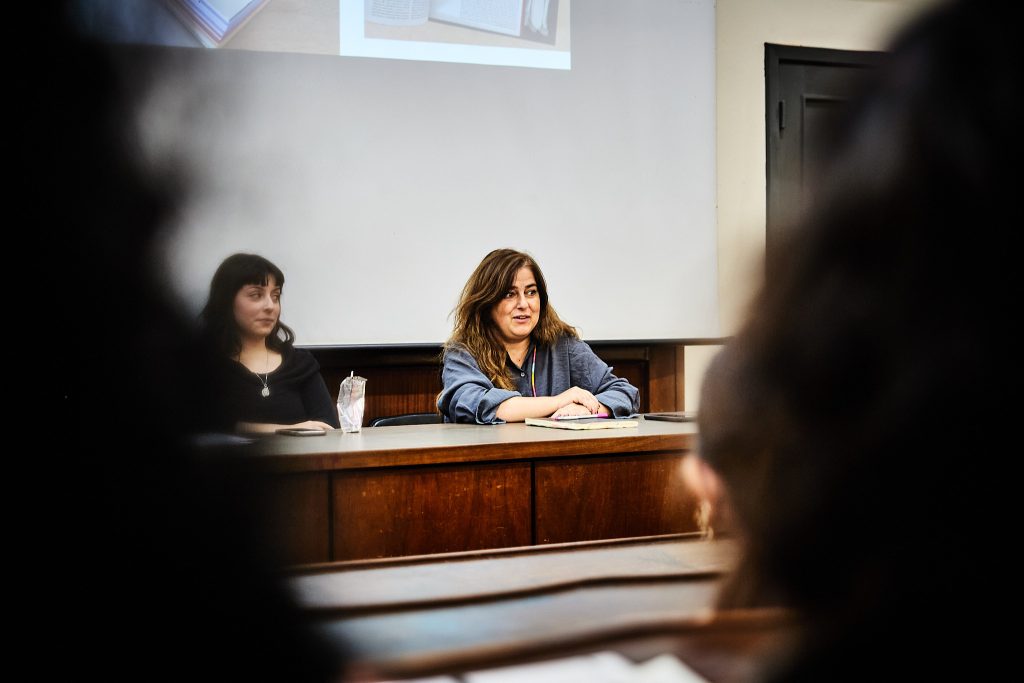

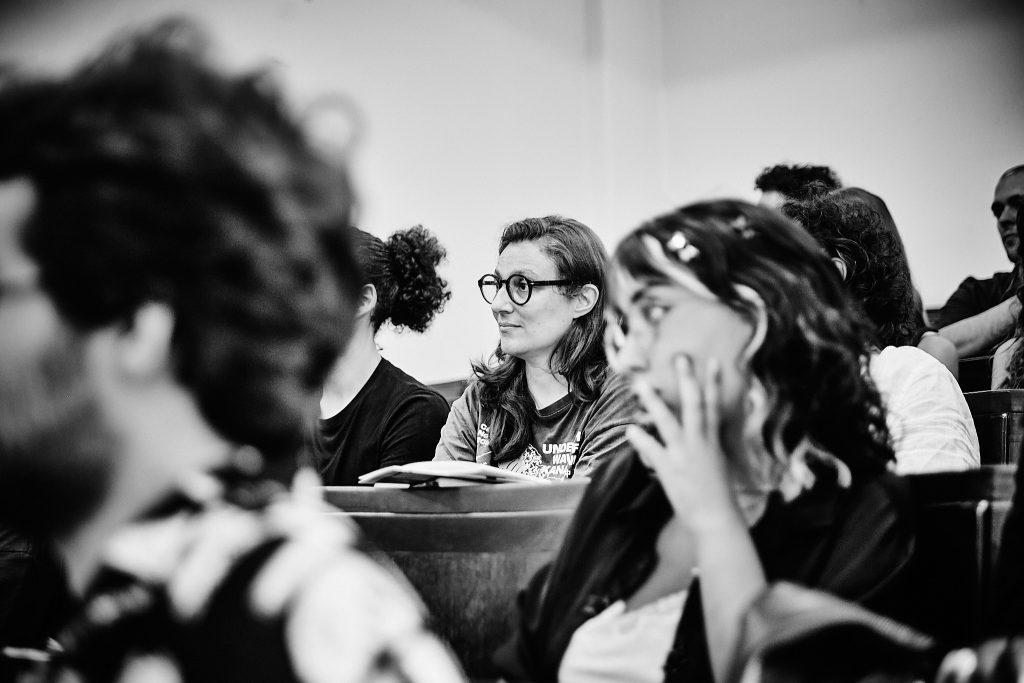
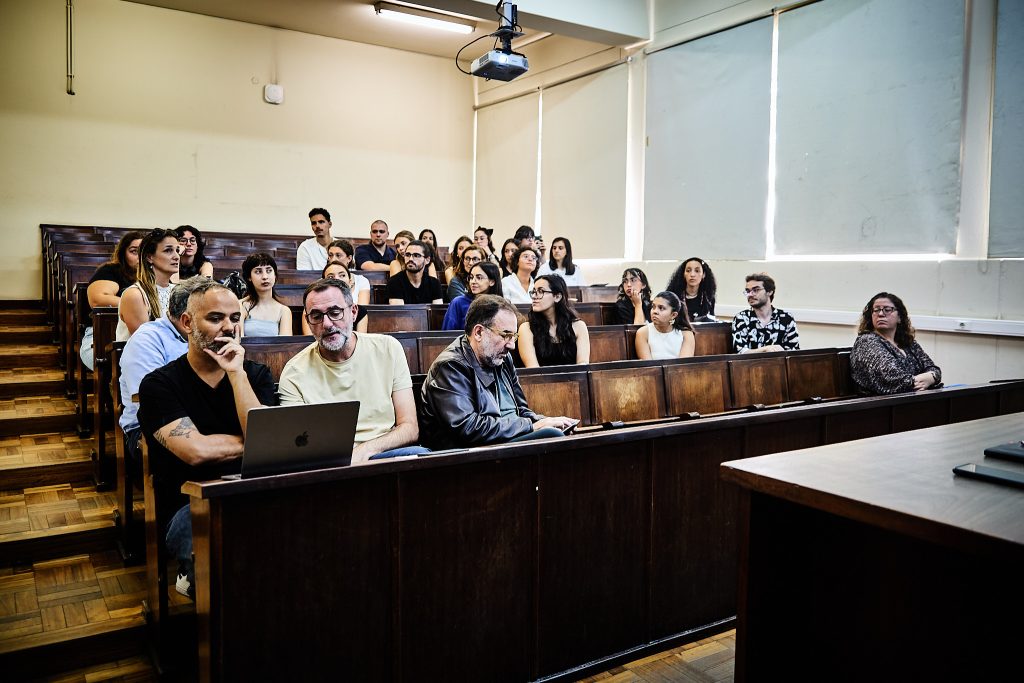

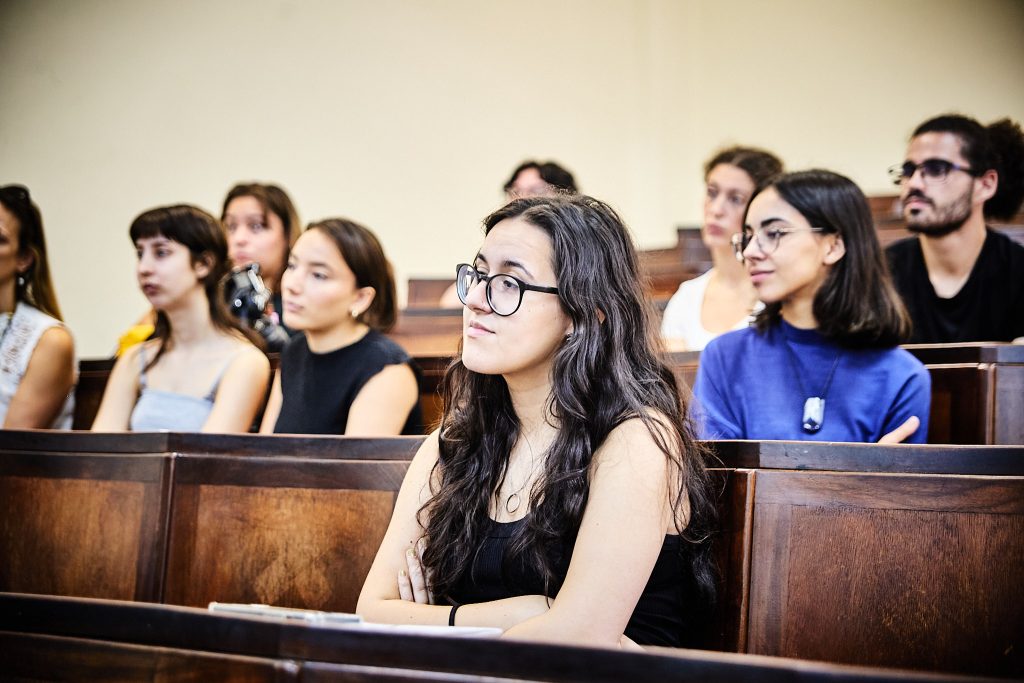
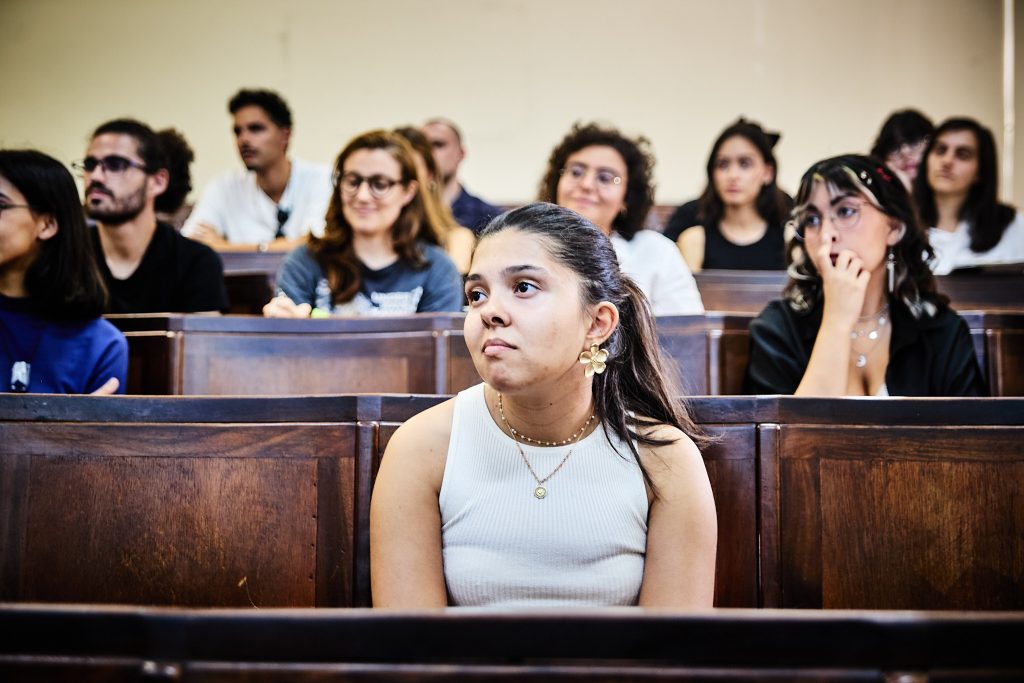
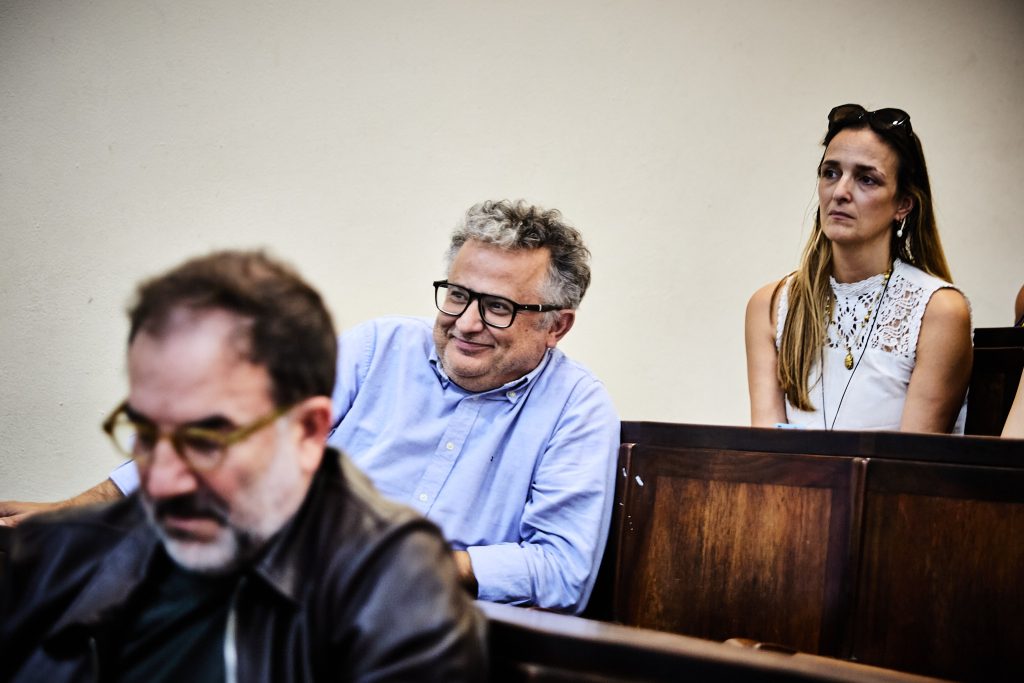
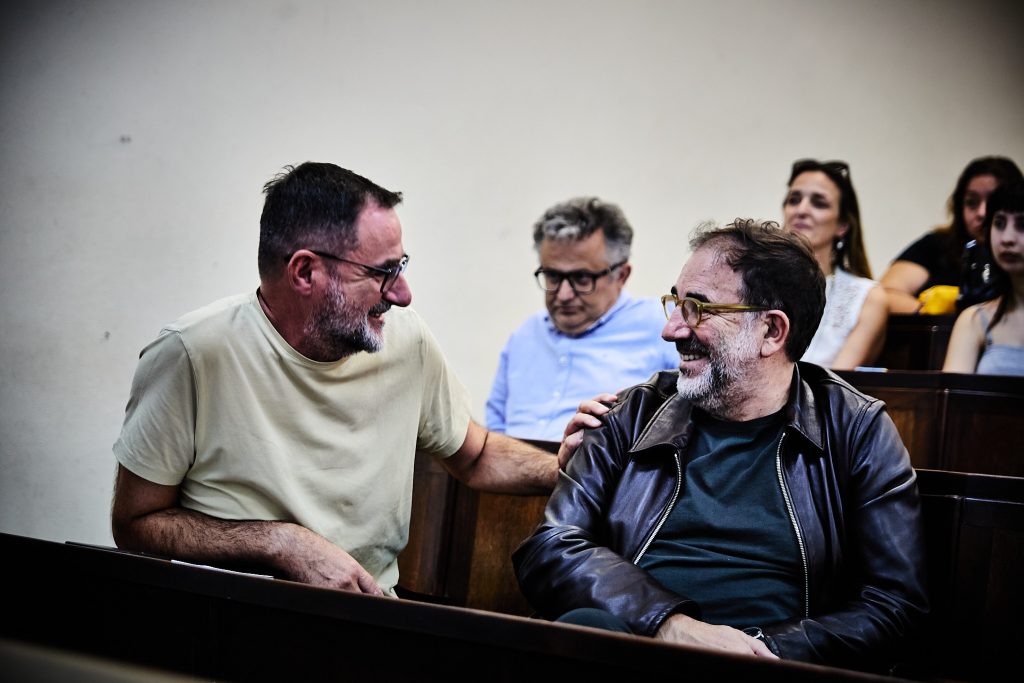
Teaching and Extracurricular Activities
Also during the two years, open classes are organized and held, such as the open-to-attend upcoming masterclasses of Maria Manuela Restivo (October 3), Rui Abreu (October 30), workshops, and training in a teaching context. Usually in EADET, DT, and Project
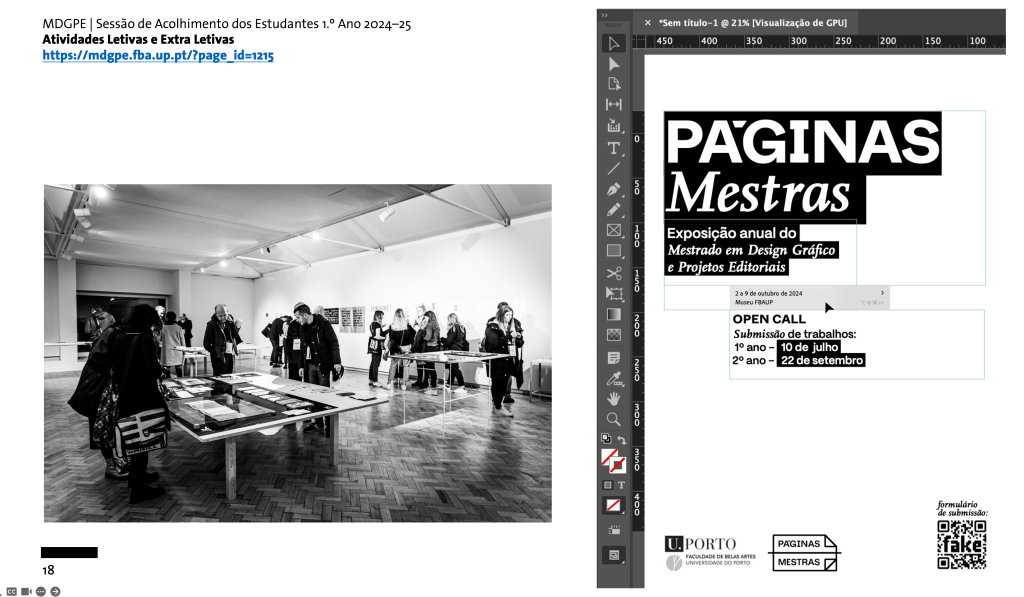
Or in an extracurricular context. Which can be in specific areas complementary areas or areas of greater specialization of the UCs
- 1st edition of the MDGPE student exhibition “Páginas Mestras”
- Typography Meeting in Évora in November
- IJUP 2025
- Processing Community Day @ Porto (PCD25) (T.B.A)
- World Graphics Day / [FBAUP] Design Day (~April 27)
Information that will be available on the institutional website. But they will also be communities via email and FBAUP social networks
It is also worth mentioning that — preferably in the second year — you will work under the guidance of any FBAUP professor, or any UP professor, with relevant research or development activity within the chosen theme.
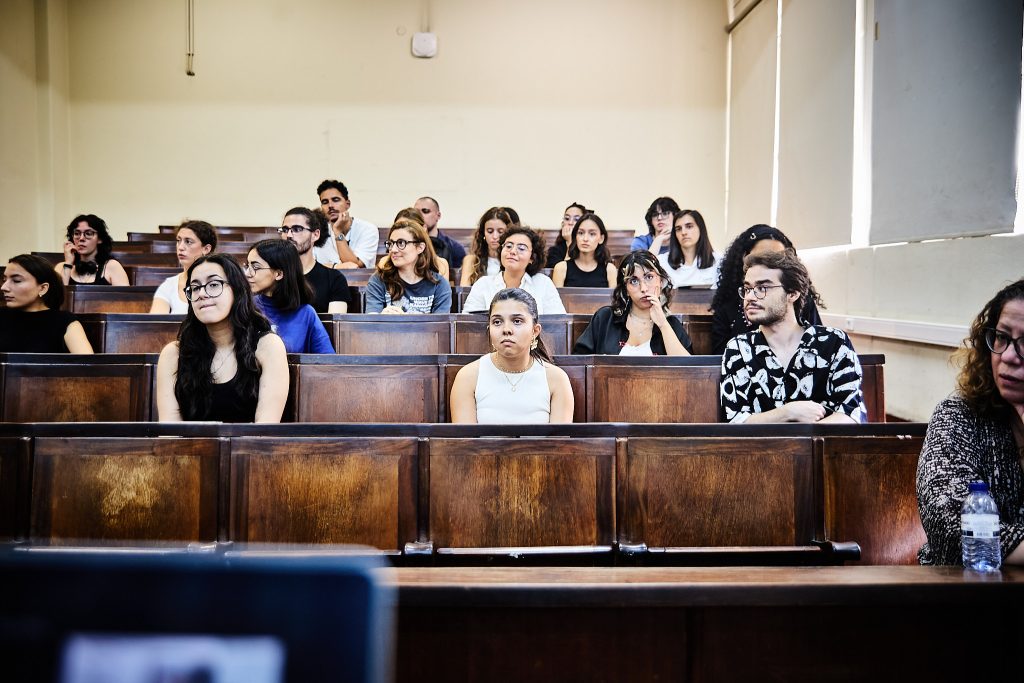
And that you can choose to do the project in Portugal or abroad — international mobility is a possibility and, for this, we recommend that you keep an eye on the information from the international office.
And, of course, students are encouraged to present and publish their results at different national and international events. As well as participate in the organization, or attend the conferences hosted and held at FBAUP on various themes and issues related to the Master’s degree.
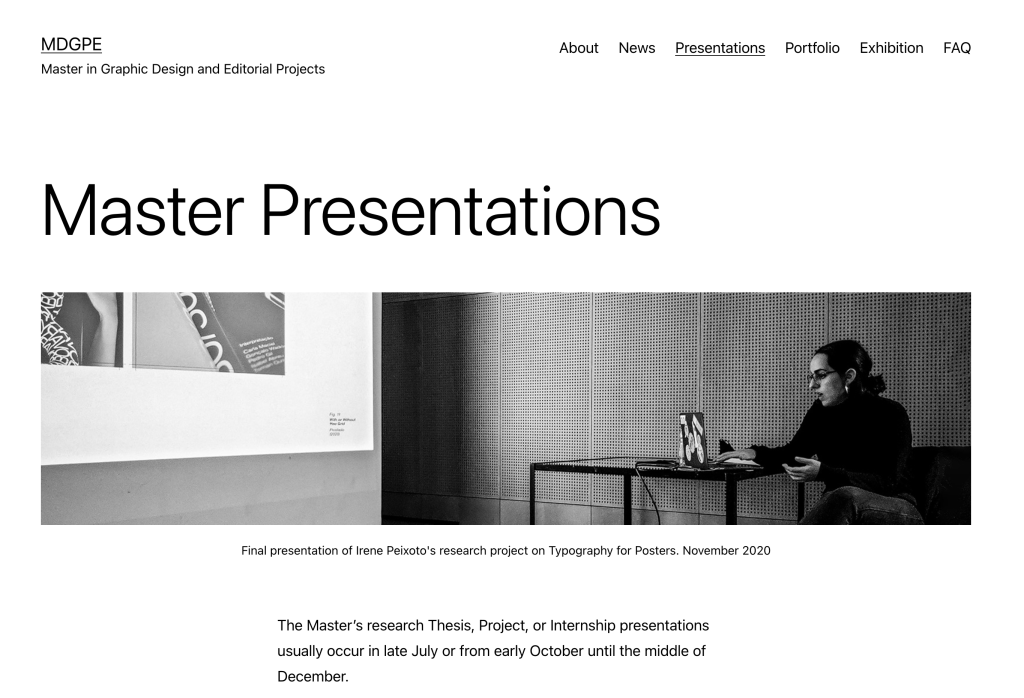
We would also like to point out that the special period for presentations and defenses of your colleagues’ master’s degrees will begin soon. This (academic) year, you have already defended 3. We are scheduling 21 public presentations between October 15 and December 15. And that’s just from our Master’s program. Within FBAUP, more than 80 students from all the programs will present their work. We count on your presence, support, and study of what awaits you.
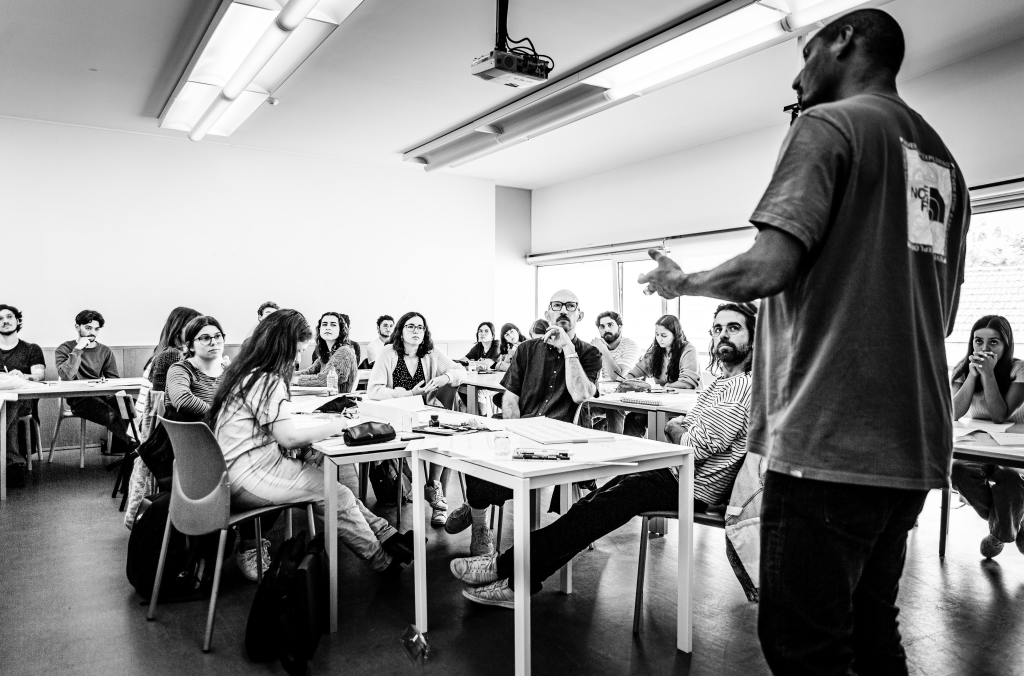
The course’s classroom is currently PS45 in the south pavilion, which you will soon see. However, we are studying the possibility of expanding and improving the space. We would like to remind you of the opportunity to work in the student room PS44 and use the computers in PS43.
On a positive note, we have been making constant investments in equipment and books. The library’s bibliography has been growing and being updated. As well as the equipment assigned to the Design Department — the Guillotine, Creasing Machine, and Electric Stapler in PS44 —, and Lead [Letterpress] Type and Flatbed Proof Presses and Chicago Printing Presses acquired and loaned in the last 2 years in the Engraving Workshop and which has the support of the technician Catarina Marques. Regarding the latter, we hope that your colleague Rita Melo from the 2nd year will put them into use and service very soon.
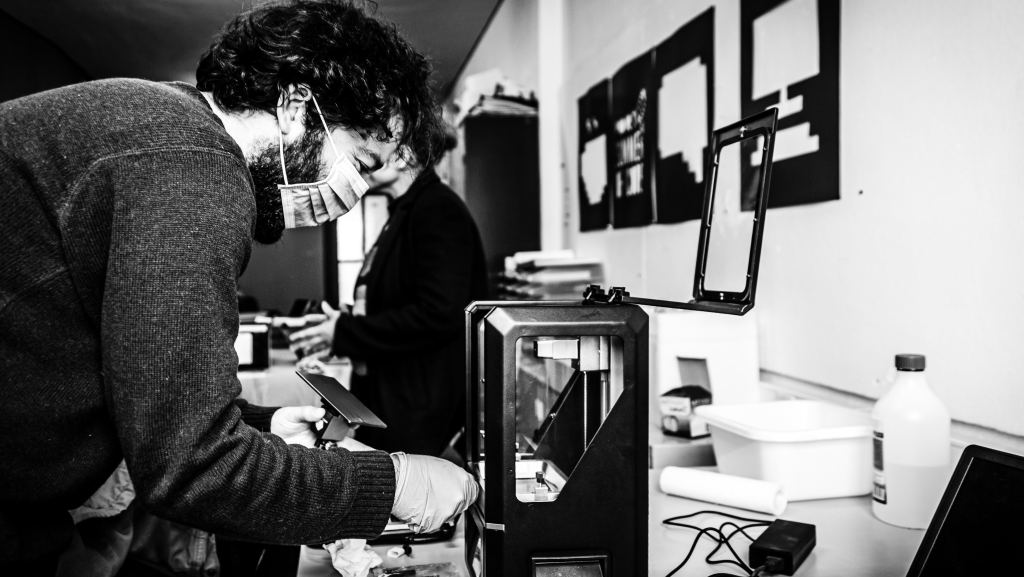
We also count on the support of the printing and prototyping office — Tiago Pinho in PA302 — which I hope will provide extra support for more material and analog projects. Please use and abuse.
We still have a long way to go, we know, but we also need you to put pressure on FBAUP’s services and equipment so that we can recover the graphic experimentation laboratory project and have more and better services and equipment.
Some notes on academic and administrative procedures

Configure and use digital services regularly — institutional email management (FWDs for password recovery setup). Perhaps the most important. Then there are several platforms (Sigarra, Moodle, Teams, etc.). This takes time, but you should be familiar with it. Ask for help from your colleagues who already have experience at FBAUP.
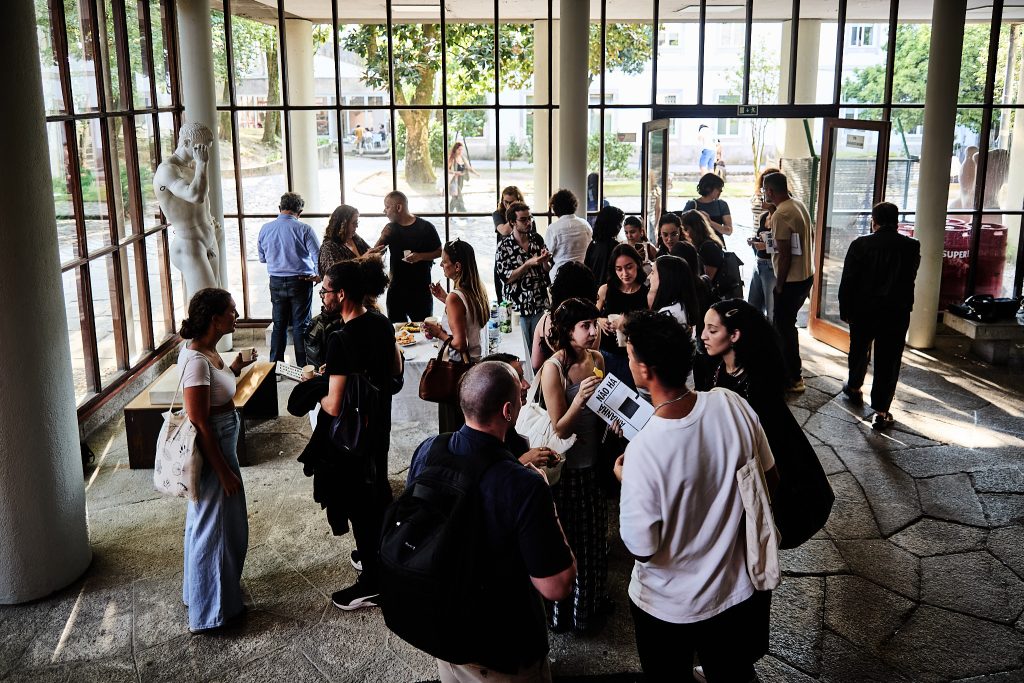
Make the most of the course, the faculty, and the city
Finally, and now to finish — I would like to wish you all the best personally and professionally, especially for the next two years that we count on you here at FBAUP and in Porto.
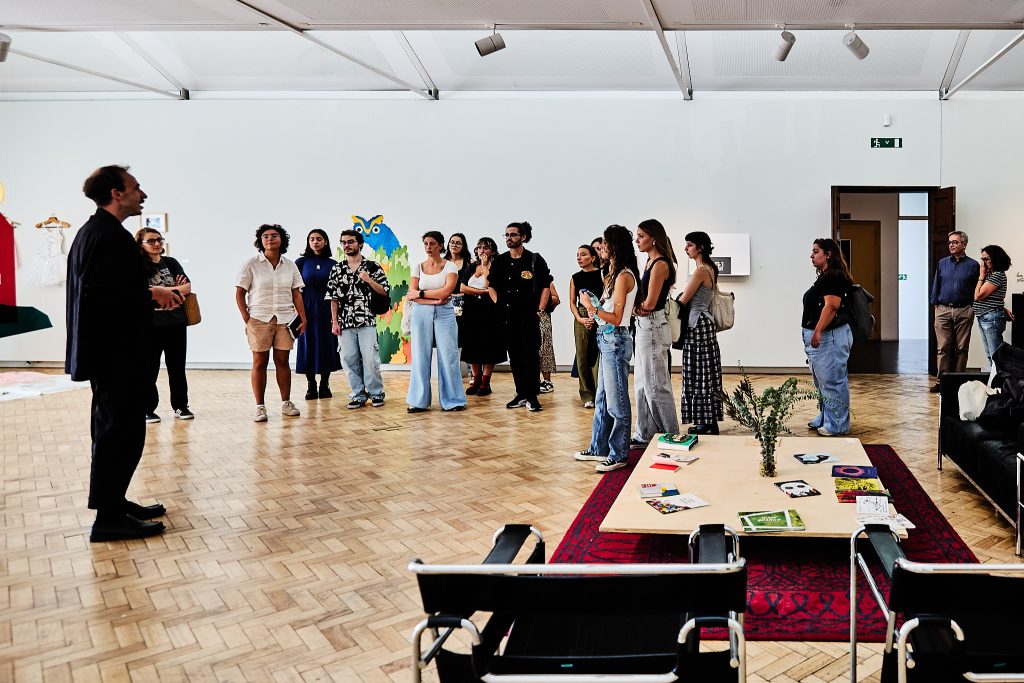


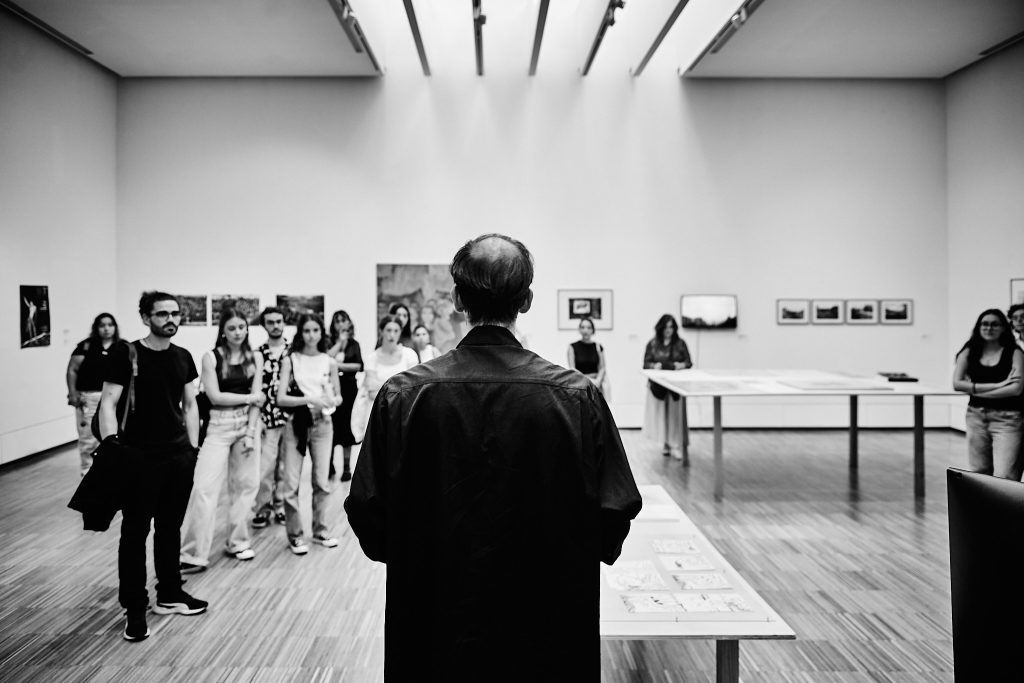
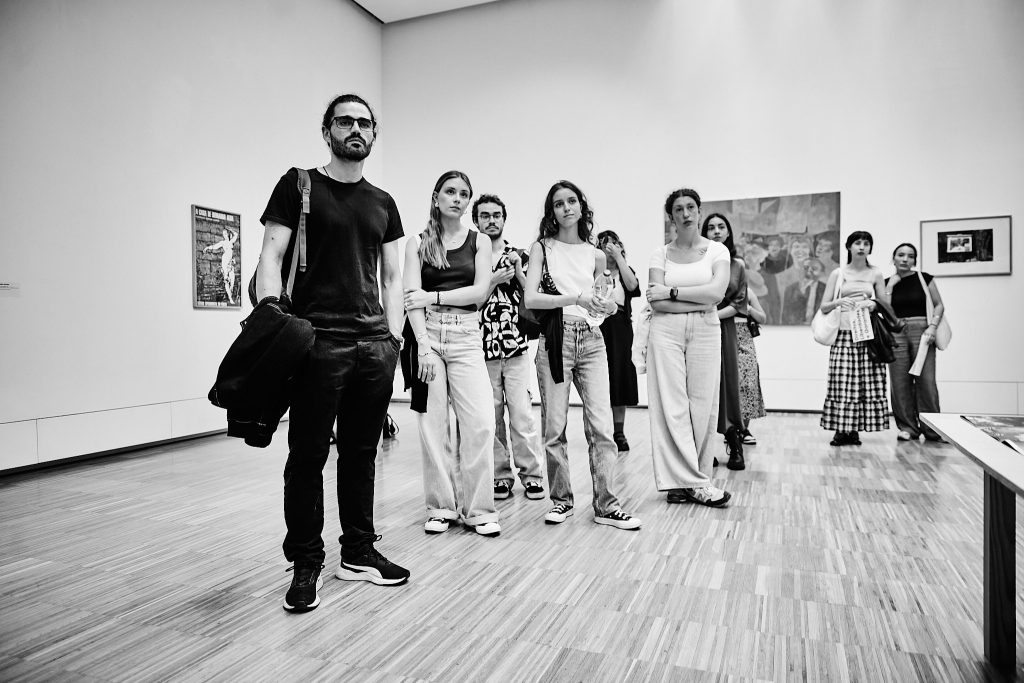
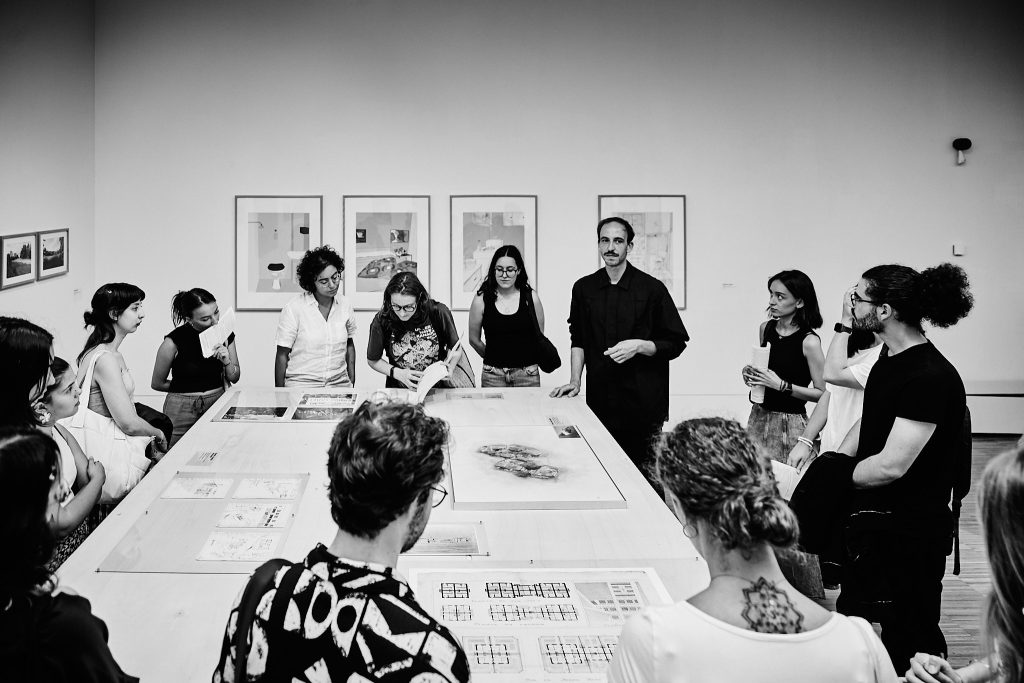
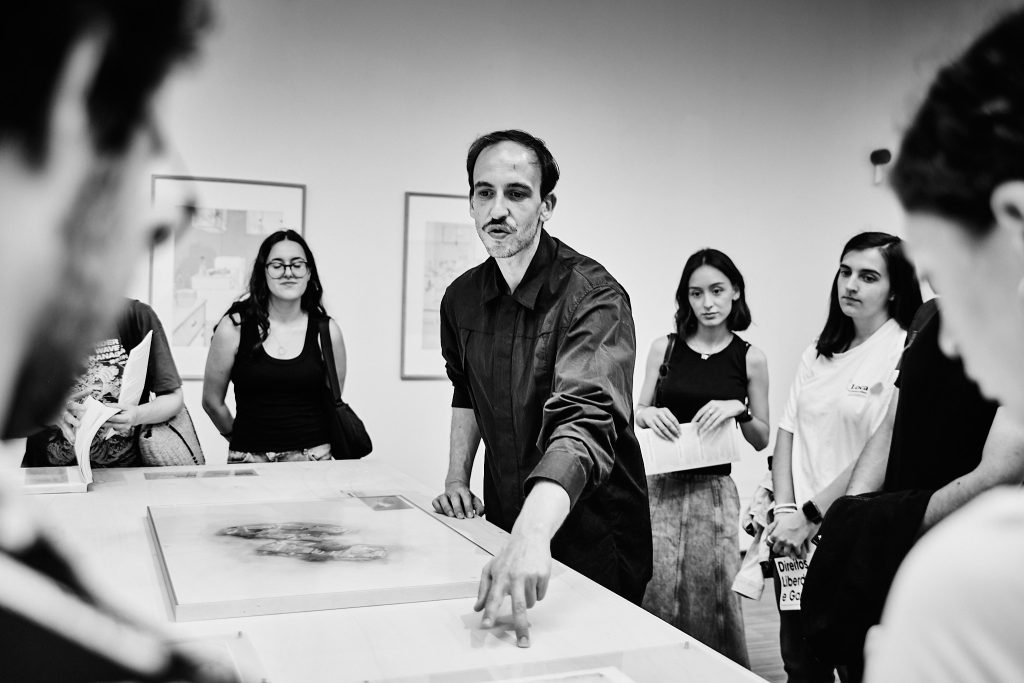
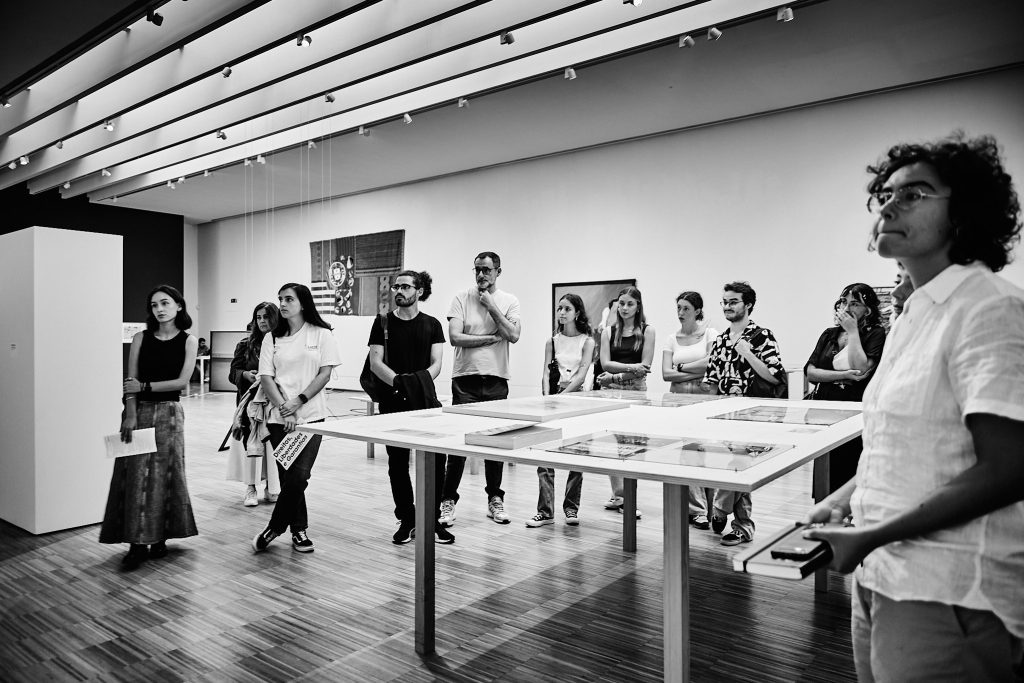
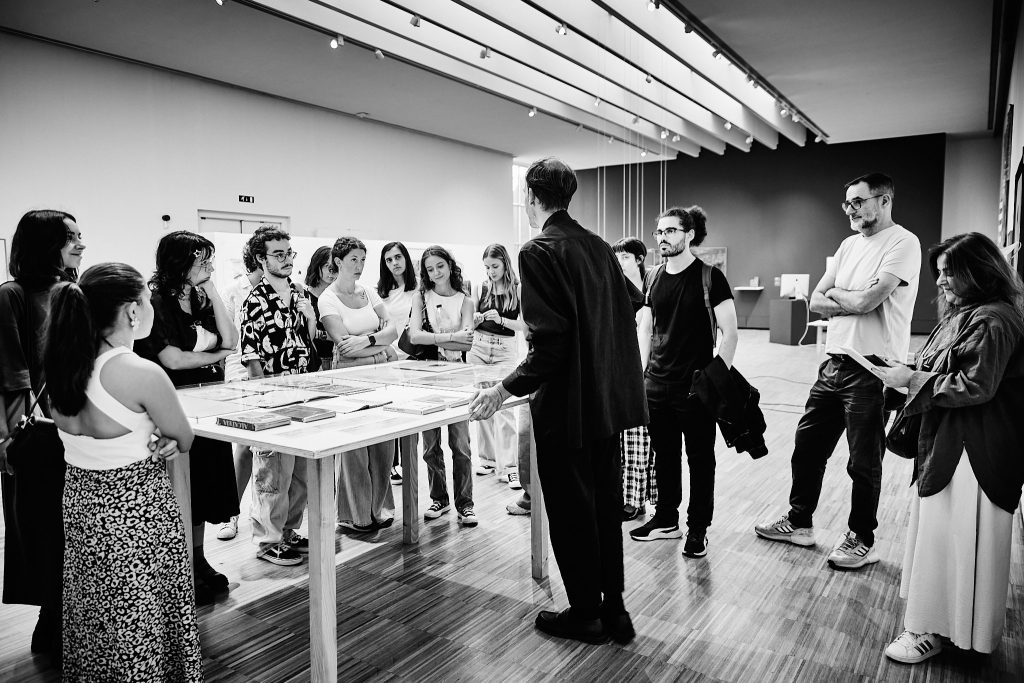
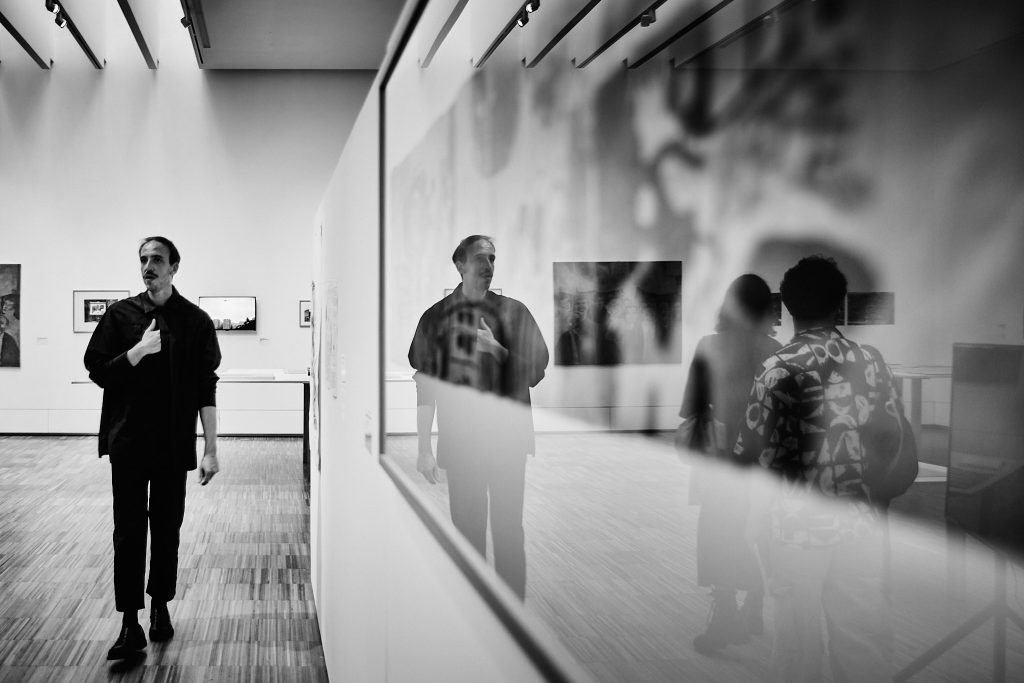
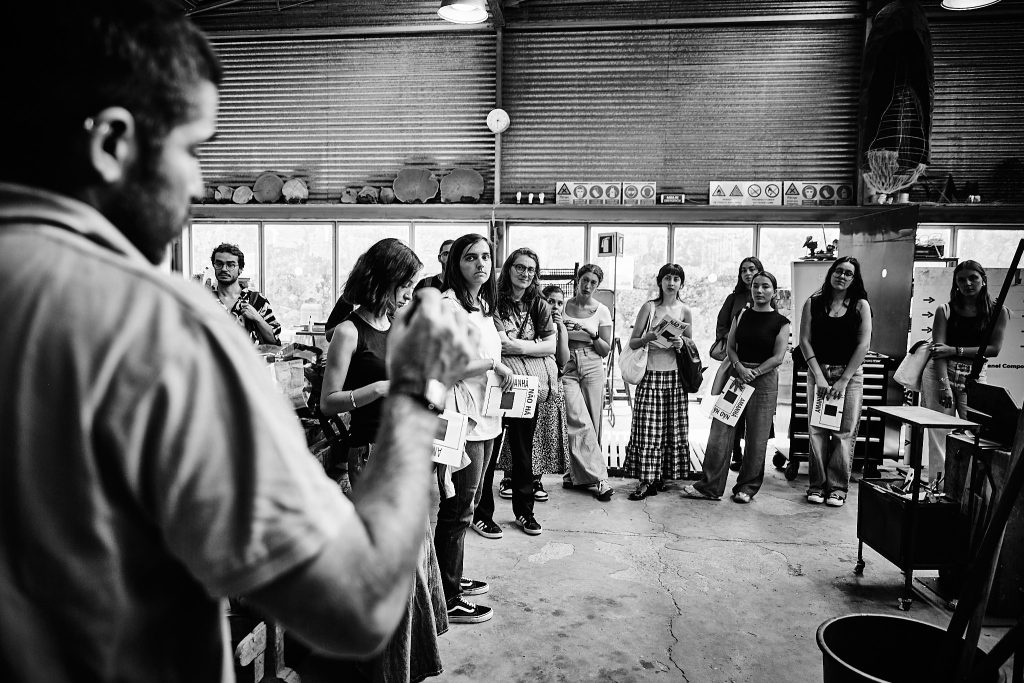
We visited the most important facilities at The Main Building (Academic Office, Library, Museum, Stationery Shop, Bar), some of the technologies and workshop buildings (Wood and Metal Workshop, Engraving and Prinkmaking Workshop), the Exhibition Building, the Carlos Ramos [Architecture] Building (where the IT services are) and the South Building where most of your classes will take place.
Take the opportunity to familiarize yourself with other important services and places in the city — Norcópia, the Portuguese press, Moldursant, but also, of course, places of socializing that are important for your social development and fun in Porto
Make the most of the artistic and cultural components offered by the city and the faculty. Do not be passive about the conditions, teaching, or guidance — we hope that you will challenge yourselves and us to go beyond the current limits, actively building this shared curriculum. For this, you can count on us — professors, academic staff, auxiliary staff, and senior technicians.
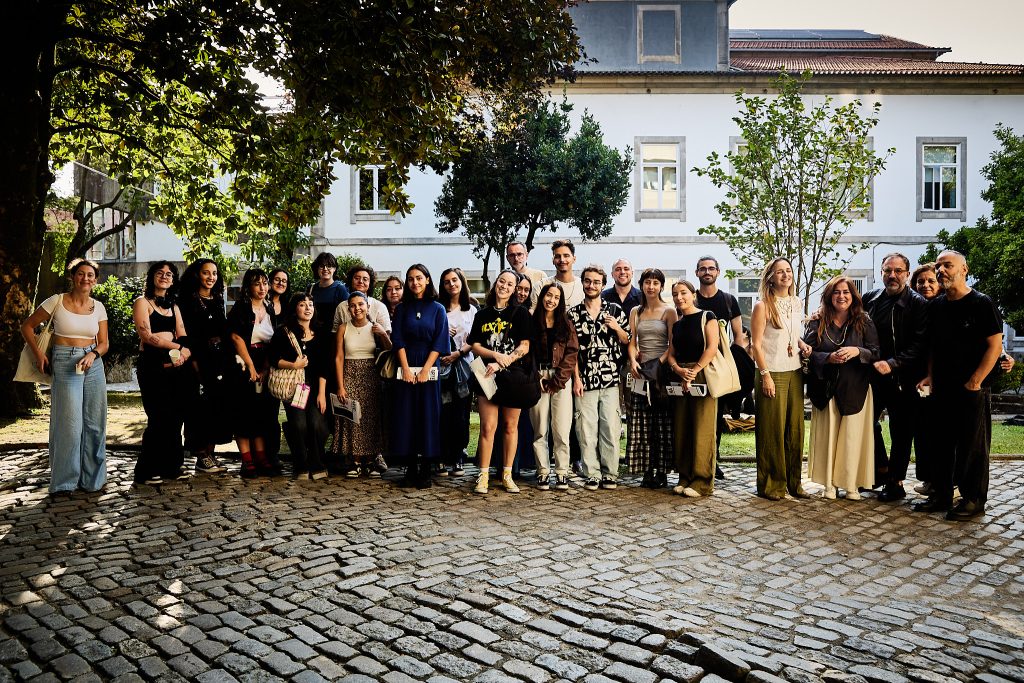
We are here to support you and help you achieve your goals. We wish you all an excellent academic year 2024-25 and an excellent academic path full of success and happiness.
Pedro Amado
Associate Professor at the Design Department of the Faculty of Fine Arts of the University of Porto (FBAUP). Director of the Master’s Degree in Graphic Design and Editorial Projects (MDGPE). Integrated Member of the Board of i2ADS – Institute for Research in Art, Design and Society.
